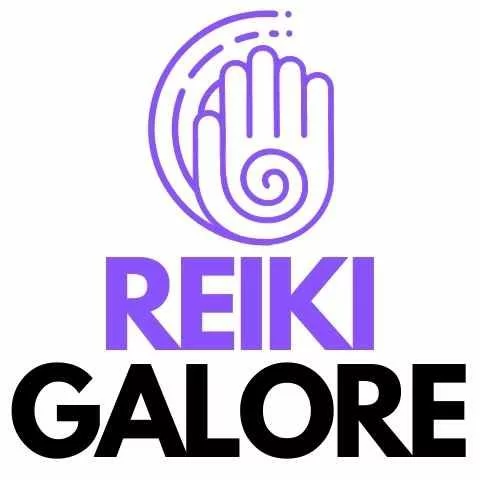Hello there, welcome to our comprehensive guide on understanding solar plexus pain. If you’re experiencing discomfort in your upper abdomen, you might be dealing with issues related to your solar plexus. But what exactly is the solar plexus? Let’s dive in!
The solar plexus, or celiac plexus, is a complex network of nerves located in the upper part of your abdomen, near where your diaphragm sits. It’s a crucial part of your body that plays a significant role in your digestive system. It’s also closely associated with the adrenal glands and the fight-or-flight response of your sympathetic nervous system.
In the realm of yoga and chakras, this area corresponds to the third chakra, also known as the solar plexus chakra or Manipura in Sanskrit. This chakra governs personal power and is associated with the color yellow and the element of fire. When this chakra is in balance, you feel a strong sense of purpose and identity. However, a blocked solar plexus chakra can lead to physical symptoms like abdominal pain.
Now, let’s talk about solar plexus pain. This type of abdominal discomfort can be caused by different conditions, such as:
- Digestive issues like ulcers or pancreatitis
- Physical trauma to the abdomen
- Stress, which can trigger a fight-or-flight response and lead to symptoms like nausea
- An imbalance or blockage in the solar plexus chakra
If you’re experiencing solar plexus pain, it’s crucial to identify the potential causes and treat the underlying condition. Treatment options can range from medical interventions for conditions like ulcers to holistic practices like yoga poses and breathing exercises for chakra balance.
In this series on the chakras, we’ll explore various aspects of the solar plexus, including its role in your physical health and wellness, and how to keep your solar plexus chakra in balance. Whether you’re dealing with a medical condition or seeking to open your solar plexus chakra, we’re here to guide you back to your normal, pain-free state.
Anatomy and Function of the Solar Plexus
The solar plexus, or celiac plexus, is more than just a point in your upper abdomen. It’s a complex network of nerves and ganglia that plays a crucial role in your body’s functioning. Let’s explore this in more detail.
The Role of the Adrenal Glands and Lungs in the Solar Plexus
The solar plexus is closely associated with the adrenal glands and the lungs. The adrenal glands, located on top of your kidneys, are responsible for releasing hormones in response to stress. This is part of your body’s fight-or-flight response, which prepares your body to either confront or run from a threat.
When you’re stressed, your adrenal glands release hormones like adrenaline. This can lead to physical symptoms like rapid heart rate, increased blood pressure, and yes, solar plexus pain. This is because stress can cause your diaphragm to tighten, leading to discomfort in the solar plexus area.
The Solar Plexus and the Autonomic Nervous System
The solar plexus is also a part of your autonomic nervous system, which controls involuntary body functions like heart rate, digestion, and breathing. It’s like the body’s “control center” for these functions.
When there’s an issue in the solar plexus, it can disrupt these functions. For instance, digestive issues can cause pain in the solar plexus area. This is why conditions like ulcers or pancreatitis, which affect your digestive system, can lead to solar plexus pain.

The Solar Plexus and the Third Chakra: A Spiritual Perspective
In the world of yoga and spirituality, the solar plexus is more than just a physical point in your body. It’s also the home of the third chakra, known as the solar plexus chakra or Manipura. Let’s delve into this spiritual perspective.
The Role of the Solar Plexus Chakra in Energy Flow
The solar plexus chakra is one of the seven chakras, or energy centers, in your body. It’s located around your upper belly at the diaphragm and is associated with the element of fire and the color yellow. This chakra governs your sense of power, identity, and self-esteem.
When the solar plexus chakra is open and energy is flowing freely, you might experience a strong sense of identity, personal power, and self-discipline. You’re able to assert yourself and move forward with confidence.
However, a blocked or imbalanced solar plexus chakra can lead to various issues. On a physical level, it can cause stomach pain, and digestive problems, and even affect organs like the gallbladder. On an emotional level, it can lead to feelings of low self-esteem, lack of control, and a victim mentality.
Balancing the Solar Plexus Chakra: Affirmations and Techniques
So, how can you bring your solar plexus chakra back into balance? There are several practices you can incorporate into your routine:
- Yoga Asanas: Certain yoga poses, or asanas, can help balance the solar plexus chakra. These include the Boat Pose (Navasana), Bow Pose (Dhanurasana), and Mountain Pose (Tadasana). These poses strengthen your core muscles and promote energy flow in the upper belly area.
- Breathing Exercises (Pranayama): Breathing exercises can also help balance this chakra. Techniques like diaphragmatic breathing can help release tension in the solar plexus area and promote a sense of calm.
- Affirmations: Positive affirmations can help clear blockages in the solar plexus chakra. Affirmations like “I am confident in all that I do” or “I am worthy of success and happiness” can help reinforce your sense of personal power.
- Aromatherapy: Certain scents, like bergamot, can also help balance the solar plexus chakra. Consider incorporating aromatherapy into your daily routine.
Remember, if you’re experiencing solar plexus pain, it’s important to consult with a healthcare provider to rule out any medical conditions. However, these spiritual practices can complement medical treatments and help you maintain a balanced solar plexus chakra.
Readers recommend: Pain when pressing on the solar plexus
Identifying the Causes and Symptoms of Solar Plexus Pain
Solar plexus pain can be quite discomforting, and understanding its causes and symptoms is the first step toward finding relief. Let’s delve into this topic.
Stress as a Common Cause of Solar Plexus Pain
One common cause of solar plexus pain is stress. When you’re stressed, your body activates its fight-or-flight response, which can lead to physical symptoms. Your adrenal glands release hormones like adrenaline, which can cause your diaphragm to tighten and lead to discomfort in the solar plexus area.
Digestive Issues and Their Role in Solar Plexus Pain
Digestive issues are another common cause of solar plexus pain. Conditions like ulcers or pancreatitis, which affect your digestive system, can lead to pain in the solar plexus area. This is because the solar plexus is closely associated with the digestive system, and any disruption in this system can cause discomfort.
Solar Plexus Injury: A Common Cause of Solar Plexus Pain
Physical trauma to the abdomen, such as a blow or trauma, can also cause solar plexus pain. This is because the solar plexus is located in your upper abdomen, and any injury to this area can affect the nerves and ganglia in the solar plexus, leading to pain.
Recognizing the Symptoms of Solar Plexus Pain
Solar plexus pain typically manifests as a sharp, stabbing pain in the upper abdomen. However, the symptoms may vary depending on the underlying cause. For instance, if the pain is due to a digestive issue like an ulcer, you might also experience symptoms like nausea or vomiting, loss of appetite, and indigestion.
If the pain is due to an injury, the affected area might be tender to touch, and the pain might radiate to other parts of your body. If the pain is due to a blocked solar plexus chakra, you might experience physical symptoms like stomach pain, as well as emotional symptoms like low self-esteem and lack of control.
If you’re experiencing solar plexus pain, it’s important to consult with a healthcare provider. They can help identify the potential causes and recommend appropriate treatment options.
Emotional Discomfort and the Solar Plexus
The solar plexus isn’t just a physical entity; it’s also closely tied to our emotional health. Let’s explore this connection and how it can impact your well-being.
The Solar Plexus and Emotional Health: Understanding the Connection
The solar plexus, or the third chakra, is often referred to as the seat of your personal power and self-esteem. It’s where you process emotions and exert your willpower. When this chakra is in balance, you feel confident, empowered, and able to take on challenges.
However, when the solar plexus chakra is blocked or out of balance, it can lead to emotional discomfort. You might experience feelings of low self-esteem, lack of control, or even a victim mentality. This emotional discomfort can manifest as physical symptoms in the solar plexus area, leading to what we commonly refer to as solar plexus pain.
Techniques for Releasing Emotional Tension in the Solar Plexus
So, how can you release emotional tension in the solar plexus and bring your third chakra back into balance? Here are a few techniques:
- Affirmations: Positive affirmations can help clear emotional blockages in the solar plexus chakra. Try affirmations like “I am confident and in control of my life” or “I release fear and embrace my personal power.”
- Meditation: Meditation can help you tune into your solar plexus chakra and release any emotional tension. Focus on the area of your solar plexus and imagine a warm, yellow light filling this area, promoting healing and balance.
- Breathing Exercises: Deep, diaphragmatic breathing can help release tension in the solar plexus area. Try breathing deeply into your belly, allowing it to rise and fall with each breath.
- Yoga: Certain yoga poses can help balance the solar plexus chakra and release emotional tension. Try poses like Boat Pose or Warrior Pose, which engage the core muscles and promote strength and confidence.
Celiac (Solar) Plexus Syndrome: An Overlooked Diagnosis
- While there are many potential causes of solar plexus pain, one condition that is often overlooked is celiac (solar) plexus syndrome. Let’s delve into this condition and why it’s important to consider in the diagnosis of solar plexus pain.
Symptoms and Diagnosis of Celiac Plexus Syndrome
- Celiac plexus syndrome is a type of abdominal neurosis where pain arises in the periaortic nervous plexuses. This condition can cause severe abdominal pain that may radiate to the back. Other symptoms may include nausea or vomiting, weight loss, and loss of appetite.
- Diagnosing celiac plexus syndrome can be challenging, as the symptoms can mimic those of other conditions. However, a thorough medical history and physical examination, along with certain diagnostic tests, can help identify this condition.
Treatment Options for Celiac Plexus Syndrome
- The treatment for celiac plexus syndrome primarily focuses on managing the pain. This can involve medications to control the pain, as well as interventions like a celiac plexus block, which involves injecting medication into the celiac plexus to block the nerves from sending pain signals.
- In addition to medical treatments, certain lifestyle modifications and holistic approaches can also help manage the symptoms. This can include stress management techniques, dietary changes, and exercises to strengthen the core muscles and promote better posture.
Recognizing Accompanying Symptoms of Solar Plexus Pain
- Solar plexus pain doesn’t always occur in isolation. It can be accompanied by a range of other symptoms, depending on the underlying cause. Let’s explore some of these accompanying symptoms.
Common Signs of Solar Plexus Pain
- Solar plexus pain typically manifests as a sharp, stabbing pain in the upper abdomen. However, the pain can sometimes radiate to other parts of the body, such as the back. The pain might also worsen when you move or breathe deeply.
When to Seek Medical Attention for Solar Plexus Pain
- While occasional discomfort in the solar plexus area can be normal, especially after a large meal or intense exercise, persistent or severe solar plexus pain warrants medical attention. Here are some accompanying symptoms that should prompt you to seek medical care:
- Nausea or vomiting
- Loss of appetite or unexplained weight loss
- Changes in bowel movements
- Pain that radiates to the back
- Pain that worsens when you move or breathe deeply
- Pain that is severe or lasts for more than a few hours
- These symptoms could indicate a serious underlying condition, such as an ulcer, pancreatitis, or even celiac plexus syndrome. It’s important to get these symptoms checked out by a healthcare provider to identify the cause and start appropriate treatment.
Understanding Solar Plexus Syndrome: The Phenomenon of Being Winded
- Have you ever been hit in the stomach and had the wind knocked out of you? This is often referred to as being “winded”, and it’s closely related to the solar plexus. Let’s explore this phenomenon, also known as solar plexus syndrome.
The Mechanism of Being Winded: A Deep Dive
- Being winded typically occurs when a forceful blow or trauma is delivered to the solar plexus area, located in your upper abdomen. This sudden impact can cause temporary paralysis of the diaphragm, making it difficult to breathe — hence the term “having the wind knocked out of you”.
- This is because the solar plexus is a complex network of nerves that plays a crucial role in your body’s functioning, including your breathing. When these nerves are shocked by a sudden impact, it can disrupt your normal breathing pattern, leading to a feeling of breathlessness.
Preventing and Treating Solar Plexus Syndrome
- Preventing solar plexus syndrome primarily involves avoiding situations where a forceful blow to the stomach might occur. This could mean wearing protective gear during contact sports or taking precautions during activities where falls are possible.
- If you do get winded, the best treatment is usually rest and time. It can be helpful to assume a comfortable position, often bending over or lying flat on the floor, and take slow, deep breaths. This can help your diaphragm relax and return to its normal function.
- However, if the breathlessness persists for more than a few minutes, or if it’s accompanied by severe pain, it’s important to seek medical attention. This could indicate a more serious injury, such as a rupture or internal bleeding.
Exploring Various Causes of Pain in the Solar Plexus Area
- Solar plexus pain can be caused by a variety of conditions, some more common than others. Let’s explore some of these potential causes.
Common Causes of Solar Plexus Pain: An Overview
- Some common causes of solar plexus pain include:
- Digestive issues: Conditions like ulcers, gallstones, or pancreatitis can cause pain in the solar plexus area. These conditions affect your digestive system, which is closely associated with the solar plexus.
- Physical trauma: A blow or injury to the abdomen can cause solar plexus pain. This is because the solar plexus is located in your upper abdomen, and any injury to this area can affect the nerves and ganglia in the solar plexus.
- Stress: Stress can cause your diaphragm to tighten, leading to discomfort in the solar plexus area. This is because the solar plexus is closely associated with the adrenal glands, which release stress hormones.
Less Common Causes of Solar Plexus Pain: What to Know
- While the above conditions are relatively common, there are also less common causes of solar plexus pain. These include:
- Celiac plexus syndrome: This is a type of abdominal neurosis where pain arises in the periaortic nervous plexuses. It can cause severe abdominal pain that may radiate to the back.
- Solar plexus chakra imbalance: In the realm of yoga and chakras, an imbalance or blockage in the solar plexus chakra can lead to physical symptoms like solar plexus pain.
Solar Plexus/Diaphragm Tightness in Long Covid
- As we continue to learn more about the long-term effects of Covid-19, one symptom that has emerged is solar plexus or diaphragm tightness. Let’s explore this symptom and its implications.
The Impact of Long Covid on the Solar Plexus
- Long Covid, also known as post-acute sequelae of SARS-CoV-2 infection (PASC), refers to a range of symptoms that continue for weeks or even months after the acute phase of the Covid-19 infection has resolved. One of these symptoms can be a feeling of tightness or discomfort in the solar plexus area.
- This could be due to the impact of the virus on the body’s autonomic nervous system, which controls involuntary body functions like heart rate, digestion, and breathing. The solar plexus, being a part of this system, can be affected, leading to symptoms like diaphragm tightness.
Managing Solar Plexus/Diaphragm Tightness in Long Covid
- If you’re experiencing solar plexus or diaphragm tightness as a part of long Covid, it’s important to consult with a healthcare provider. They can help identify the cause of these symptoms and recommend appropriate treatment options.
- In addition to medical treatments, certain practices can help manage these symptoms. These include:
- Breathing exercises: Deep, diaphragmatic breathing can help relax the diaphragm and alleviate feelings of tightness.
- Yoga and meditation: These practices can help reduce stress, promote relaxation, and improve overall well-being, which can be beneficial in managing long Covid symptoms.
- Physical therapy: A physical therapist can provide exercises and techniques to help manage diaphragm tightness and improve breathing.
Deficiencies in the Solar Plexus Chakra: A Holistic View
In the realm of yoga and spirituality, the solar plexus chakra plays a crucial role in our sense of personal power and self-esteem. But what happens when this chakra is deficient or blocked? Let’s explore this from a holistic perspective.
Signs of a Deficient Solar Plexus Chakra
A deficient solar plexus chakra can manifest in various ways. On a physical level, you might experience symptoms like stomach pain, digestive issues, or even solar plexus pain. On an emotional level, you might struggle with feelings of low self-esteem, lack of control, or a victim mentality.
Other signs of a deficient solar plexus chakra can include difficulty making decisions, lack of self-discipline, and a tendency to be passive or submissive.
Techniques for Balancing the Solar Plexus Chakra: Affirmations and More
If you suspect that your solar plexus chakra is deficient, there are several practices you can incorporate into your routine to help balance this chakra:
- Affirmations: Positive affirmations can help clear blockages in the solar plexus chakra. Try affirmations like “I am confident and in control of my life” or “I release fear and embrace my personal power.”
- Yoga: Certain yoga poses can help balance the solar plexus chakra. These include poses that engage the core muscles, like Boat Pose or Warrior Pose.
- Meditation: Meditation can help you tune into your solar plexus chakra and release any blockages. Focus on the area of your solar plexus and imagine a warm, yellow light filling this area, promoting healing and balance.
- Diet: Eating foods that are yellow or gold, like bananas, corn, and yellow peppers, can also help balance the solar plexus chakra.
Managing Solar Plexus Pain: A Comprehensive Guide
If you’re experiencing solar plexus pain, it’s important to know that there are various ways to manage this discomfort. Let’s explore both medical treatments and holistic approaches to managing solar plexus pain.
Medical Treatments for Solar Plexus Pain
The medical treatment for solar plexus pain largely depends on the underlying cause. For instance, if the pain is due to a digestive issue like an ulcer, your healthcare provider may recommend medications to reduce stomach acid and promote healing. If the pain is due to an injury, rest and pain relievers may be recommended.
In some cases, more invasive treatments may be necessary. For instance, if the pain is due to gallstones, surgery may be required to remove the gallbladder.
Holistic Approaches to Solar Plexus Pain: Keeping the Solar Plexus Chakra in Balance
In addition to medical treatments, holistic approaches can also be beneficial in managing solar plexus pain. These can include:
- Yoga and meditation: These practices can help reduce stress, promote relaxation, and improve overall well-being, all of which can be beneficial in managing solar plexus pain.
- Breathing exercises: Deep, diaphragmatic breathing can help relax the diaphragm and alleviate feelings of tightness in the solar plexus area.
- Chakra balancing techniques: If the pain is related to a blockage in the solar plexus chakra, techniques like affirmations, color therapy, and certain yoga poses can help balance this chakra.
Lifestyle Modifications to Alleviate Solar Plexus Pain
Certain lifestyle modifications can also help manage solar plexus pain. These can include:
- Stress management: Since stress can contribute to solar plexus pain, techniques to manage stress, like mindfulness and relaxation exercises, can be beneficial.
- Dietary changes: If the pain is related to a digestive issue, changes to your diet, like avoiding spicy or fatty foods, can help.
- Regular exercise: Regular physical activity can help strengthen your core muscles, improve your posture, and promote better digestion, all of which can help manage solar plexus pain.
Conclusion: The Importance of Understanding Solar Plexus Pain
- We’ve journeyed through the complexities of the solar plexus, exploring its physical and spiritual significance, the various causes of solar plexus pain, and the ways to manage this discomfort. It’s clear that the solar plexus, while often overlooked, plays a crucial role in our physical health and emotional well-being.
- Understanding solar plexus pain is about more than just identifying the physical causes. It’s about recognizing the interplay between our physical health and our emotional and spiritual well-being. It’s about understanding how stress can manifest as physical discomfort, and how balancing our solar plexus chakra can help us reclaim our personal power.
- Whether you’re dealing with solar plexus pain due to a medical condition or a blocked solar plexus chakra, remember that help is available. From medical treatments to holistic practices, there are various ways to manage this discomfort and improve your quality of life.
- As we conclude this comprehensive guide, we hope that you’ve gained a deeper understanding of the solar plexus and the common causes of solar plexus pain. Remember, understanding your body is the first step toward optimal health. Here’s to your health and wellness!



